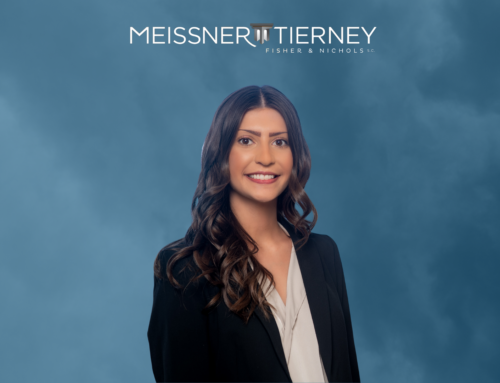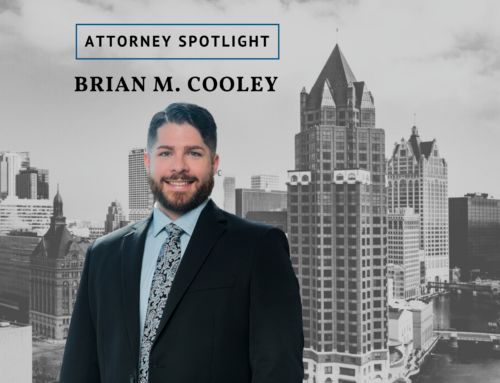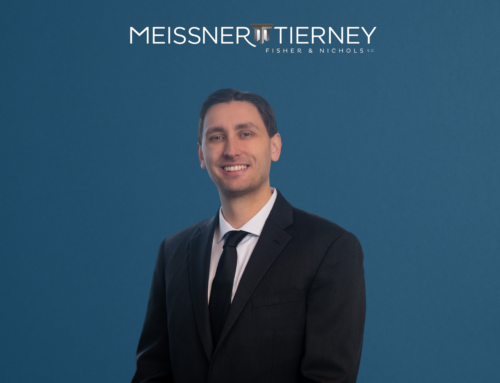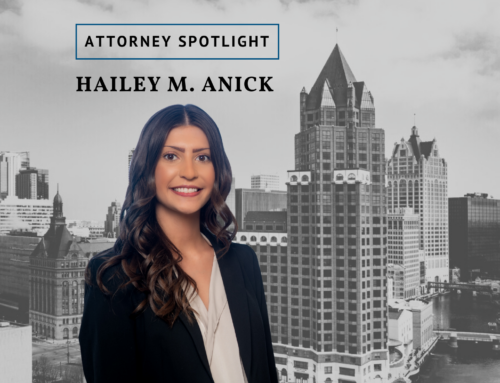Choice of Entity Corner
Assuming that the owner of a particular trade or business will be subject to employment tax, choice of entity can make a big difference as to how that tax applies. This difference is not simply attributable to which broad general “tax” category—viz. C corporation, S corporation and partnership—a particular entity belongs. Even within the partnership “tax” category, general partnerships, limited partnerships, limited liability companies (LLCs) and other entities may be treated differently, depending on both their classification, as such, for state law purposes and the substantive characteristics of such status under state law.
By way of background, it is important to remember that the self-employment tax is only imposed on individuals.1 As such, there is no self-employment tax applied at the entity level. Moreover, the only entity-level income whose pass through would trigger self-employment tax at the individual level is an entity that is treated as a partnership for tax purposes. However, Code Sec. 1402(a)(13) specifically provides that, in determining net earnings from self-employment, “there shall be excluded the distributive share of any item of income or loss of a limited partner, as such”—other than certain “guaranteed payments” made to that partner for services actually rendered to or on behalf of the partnership.
This “limited partner” exclusion is seemingly straightforward and categorical. It should apply to an individual with respect to his or her limited partnership interest, even if that individual also happens to be a general partner of the limited partnership.2 Because this statutory exclusion predates the “check-the-box” era, and the attendant rise of the LLC, its application outside of an actual state law limited partnership has been more than a little uncertain. However, recent guidance suggests that a measure of clarity—welcome or otherwise—may be on the way.
The 1997 Proposed Regulations on the “Limited Partner” Exclusion
In 1997, Treasury proposed changes to the self-employment tax regulations (the “Proposed Regulation”) with the goal of creating definitive rules as to how the “limited partner” exclusion should be applied to the ever increasing variety of limited liability entities other than state law limited partnerships—principally, LLCs.3 The Proposed Regulation provides, generally, that an individual is treated as a limited partner for this purpose unless he or she (a) “[h]as personal liability … for the debts of or claims against the partnership by reason of being a partner,” (b) “[h]as authority … to contract on behalf of the partnership,” or (c) “[p]articipates in the partnership’s trade or business for more than 500 hours during the partnership’s taxable year.”4
By and large, the Proposed Regulation is meaningful for mere investors in an LLC, but not members who are actively engaged in the conduct of the company’s business. To be fair, there are some subtleties whereby a partner who would otherwise qualify as a limited partner, but for the fact that such partner has more than 500 hours of participation, might still be considered a limited partner based on the capital structure (particularly the classes of ownership) employed.5 However, there is a further broad limitation under the Proposed Regulation on “service partners” in a “service partnership,” providing that they shall not qualify as limited partners at all.6 This significantly diminishes any flexibility that the capital structure-based terms the Proposed Regulation might otherwise offer.
The effectiveness of the 1997 Proposed Regulation was questioned early on by Congress over concerns that it would create a significant tax increase for small businesses and, moreover, appeared to be in conflict with the plain language of the Internal Revenue Code (“the Code”)—inasmuch as the Proposed Regulation appears also to reach actual state law limited partnerships and, as such, could be applied so as to disqualify a state law limited partner of the exemption expressly permitted by Code Sec. 1402(a)(13).7 Congress imposed a moratorium preventing the Treasury from issuing final or proposed regulations defining a limited partner under Code Sec. 1402(a)(13), but this expired on July 1, 1998.8 Though this moratorium has long since elapsed, Congress has not taken any action on this matter, and Treasury has never withdrawn the Proposed Regulation. Nevertheless, as recently as December 2, 2014, IRS officials have stated that a taxpayer can still rely on the 1997 proposed regulations.9
The Renkemeyer and Riether Decisions
In the past three years, two court cases have denied the application of the “limited partner” exclusion to active partners in professional service partnerships. The first, Renkemeyer, Campbell & Weaver, LLP, held that practicing lawyers in a law firm organized as a limited liability partnership were not “limited partners” within the meaning of the exclusion.10 Importantly, the Renkemeyer court observed that the Proposed Regulation was not controlling and based its decision on legislative history of the statutory exclusion itself.
Noting that the provision was intended “to exclude for coverage purposes certain earnings which are basically of an investment nature,” the court in Renkemeyer concluded that the exclusion is not to be extended to “partners who performed services for a partnership in their capacity as partners.”11 In the instant case, the court observed that the lawyers in question paid a relatively nominal amount for their ownership interests and, moreover, all of the firm’s revenue was derived from the provision of professional legal services.12 Against this background, the court in Renkemeyer had little difficulty finding that the lawyers in question were not “limited partners” within the meaning of the exclusion.
The second case, Riether, held that a physician and his spouse were not considered “limited partners” in a diagnostic imaging business owned by them and organized as an LLC—thereby making them subject to self-employment tax on the earnings that passed through to them from the LLC.13 In this case, the members advanced two arguments: (1) that because the LLC paid them “wages” and issued each of them a Form W-2, in addition to a Schedule K-1 for their distributive share of partnership income, they were employees of the partnership and not self-employed; and (2) that income from the LLC was “unearned income” not otherwise subject to the self-employment tax.14
The court in Riether rejected this first argument on the grounds that Revenue Ruling 69-18415 (which also predated the existence of LLCs) provides that “members of a partnership are not employees of the partnership” for self-employment tax purposes.16 Relying heavily on the reasoning of Renkemeyer, the court similarly blew past the second argument, stating that unearned income are not “magic words” that trump the fact that Code Sec. 1402(a) applies to a taxpayer’s entire distributive share of the partnership income.17
While both decisions were putatively based on the statutory language alone, rather than the Proposed Regulation, it is worth pointing out that the taxpayers in the Renkemeyer and Riether cases certainly would not have fared any better if the Proposed Regulation had been applied—inasmuch as the taxpayers were pretty clearly “service partners” in “service partnerships” engaged in the traditional professions of law and medicine (respectively).18
Chief Counsel Memorandum 201436049
On September 5, 2014, the IRS released Chief Counsel Advice Memorandum 201436049. This internal—and partially redacted—memorandum considered the application of Code Sec. 1402(a)(13) to the partners of an investment management company, organized as an LLC under state law. This management company was the general partner of a pair of investment funds, organized as state law limited partnerships, and oversaw their business and affairs.
The IRS concluded that the members in question performed extensive full-time services for the company in their capacity as members (i.e., acting in the manner of self-employed persons) and that the management company derived its income from the investment management services performed by its members. Accordingly, the members of the management company were held not to be limited partners within the meaning of Code Sec. 1402(a)(13), and they were subject to self-employment tax on their respective distributive share of the management company’s income. While the IRS’s conclusion here is not all that surprising—given the many similarities to the cases at bar in Renkemeyer and Riether—the memorandum is nevertheless instructive in a couple of respects.
First, the memorandum is notable for the fact that it deals with the application of the limited partner exclusion in the area of “investment management,” rather than the more traditional fee-for-service professions of law and medicine. Despite the fact that investment management would seem to permit a number of conceptual distinctions from the more traditional professional services—owing to the fact that at least some revenue could be said to result solely from the mere ownership of investments—the IRS had little difficulty dismissing such abstraction, focusing instead on the multitude of day-to-day services being provided by the management company (such as analyst services, trading services, portfolio management services, etc.).
Second, the memorandum’s reliance on the analysis contained in the Renkemeyer and Riether cases—notwithstanding that the fact pattern at issue appeared to be at least a little more nuanced—suggests that the IRS is simultaneously sharpening and simplifying its reasoning. In the case under consideration, the investment management LLC had split its ownership into multiple classes of membership units (including multiple classes of voting and “nonvoting” units), and the members even reported some self-employment income to the extent of certain guaranteed payments to the partners. In this respect, it appeared that the LLC was essentially trying to replicate some of the dynamics of a state law limited partnership.
Nevertheless, the IRS dismissed these apparent efforts to tee-up distinctions based on the types of membership units held and the nature of the income passing through to the members from their units (i.e., earned versus unearned), and essentially reduced the analysis to the core principles of the Proposed Regulation: (1) active management or service as a partner means you are not a limited partner, and (2) if you are not a limited partner, then your whole distributable share of the partnership income (regardless of the class of ownership from which it is derived) is subject to self-employment tax—full stop.
The memorandum is also notable for what it does not address. Specifically, the memorandum does not address the question of whether the same analysis would apply if the investment managers in question had, in fact, been state law “limited partners” of an investment management business actually organized as a state law “limited partnership”—as opposed to members of a state law LLC structured as the functional equivalent of a limited partnership. The categorical nature of the memorandum’s reasoning certainly suggests that the same analysis might be applied in a true state law limited partnership context, but “form” has long controlled over “substance” when it comes to the application of Code Sec. 1402(a)(13).
A final interesting side note: The management company in question, whose predecessor had been organized as an S corporation, attempted to argue that the investment income passing through to its member should be regarded as “reasonable compensation”—seemingly by way of appeal for some sort of equitable application of S Corporation treatment. However, the IRS dismissed this notion out of hand, noting: “Management Company cannot change the character of its Partners’ distributive shares by paying portions of each Partner’s distributive share as amounts mislabeled as so-called ‘wages.’ Management Company is not a corporation and the ‘reasonable compensation’ rules applicable to corporations do not apply.”19 This would clearly seem to underscore that the IRS does appear to specifically recognize that the concepts of reasonable compensation and dividend distributions in the S corporation context remain clearly distinct from the partnership realm. Thus, the use of an S Corporation as a viable planning technique for those looking to minimize their exposure to self-employment taxes would appear to be intact.
Further Changes on the Horizon?
On August 26, 2014, the Department of Treasury and IRS released its 2014-2015 Priority Guidance Plan—setting out the “317 projects that are priorities for allocation of the resources of [their] offices during the twelve-month period from July 2014 through June 2015.”20 Of note, item B.16, under the “Employee Benefits” section of the priority guidance list, is “Guidance on the application of [Code Sec.] 1402(a)(13) to limited liability companies.”21 Coming off its pair of victories in Renkemeyer and Riether, the IRS appears to be taking a very narrow view of Code Sec. 1402(a)(13) outside of the true “limited partnership” context. The fact that this priority list purports to focus exclusively on LLCs—and, presumably, will specifically exclude any application to actual limited partnerships (such as might draw further legislative objection)—may presage a more rigid worldview.
ENDNOTES
1 See Code Sec. 1402(a), (b).
2 Similarly, it should also apply in the fairly common situation where the same individual owns some or all of the stock of an S corporation that is the general partner of the limited partnership, in addition to owning his or her limited partner interest. See, e.g., V. Grigoraci, 84 TCM 186, Dec. 54,842(M),TC Memo. 2002-202.
3 Proposed Reg. §1.1402(a)-2(h).
4 Proposed Reg. §1.1402(a)-2(h)(2).
5 Proposed Reg. §1.1402(a)-2(h)(4).
6 Proposed Reg. §1.1402(a)-2(h)(5). For this purpose, service partnerships are defined as partnerships “substantially all of the activities of which involve the performance of services in the fields of health, law, engineering, architecture, accounting, actuarial science, or consulting,” and a service partner as one who provides more than a de minimis amount of services to or on behalf of the partnership. See Proposed Reg. §1.1402(a)-2(h)(6)(ii), (iii).
7 See Patrick McCarthy, LLCs and Self-Employment Tax, 74 Practical Tax Strategies 132, 134 (March 2005).
8 Id.
9 See Amy S. Elliott, Scope of Self-Employment Tax Exemption Guidance Could be Broad, Tax Notes Today (Dec. 3, 2014) (quoting Jeanne Singley, Branch 1 attorney (employment tax), IRS Office of Associate Chief Counsel (Tax- Exempt and Government Entities)).
10 Renkemeyer, Campbell & Weaver, LLP, 136 TC 137, Dec. 58,543 (2011).
11 136 TC at 150 (quoting H. Rept. 95-702 (Part 1), at 11 (1977)).
12 Id.
13 R.J. Riether, DC-N.M., 919 FSupp2d 1140 (2012).
14 While not unpacked in any detail, this second contention is significant in the context of a diagnostic imaging facility. Such facilities earn a significant amount from the so-called “technical component” of the procedure reimbursement paid by governmental and private payors. The technical component is, essentially, revenue attributable to the ownership and operation of the equipment—rather than the performance of actual medical services (which are reimbursed though the “professional component” of the fee).
15 Rev. Rul. 69-184.
16 Supra note 13, at 1159.
17 See Id.
18 Proposed Reg. §1.1402(a)-2(h)(6)(ii), (iii).
19 CCA Memo. 201436049, at 9 (May 20, 2014) (emphasis added).
20 Available at www. i r s .gov/pub/irs-utl/2014-2015_pgp_initial.pdf (last visited Jan. 28, 2015)
21 See 2014-2015 Priority Guidance Plan at 8.
This article is reprinted with the publisher’s permission from the JOURNAL OF PASSTHROUGH ENTITIES, a bi-monthly journal published by CCH, a Wolters Kluwer business. Copying or distribution without the publisher’s permission is prohibited. To subscribe to the JOURNAL OF PASSTHROUGH ENTITIES or other CCH Journals please call 800-449-8114 or visit www.CCHGroup.com. All views ex pressed in the articles and columns are those of the author and not necessarily those of CCH or any other person. All Rights Reserved.
© 2016 CCH Incorporated and its affiliates. All rights reserved. Reprinted with permission from the Journal of Passthrough Entities.






